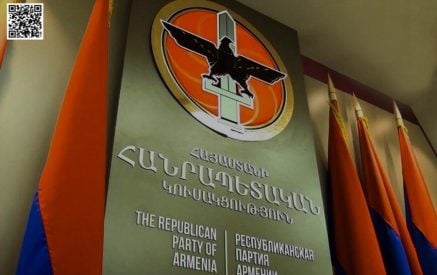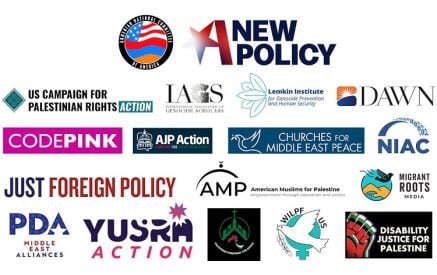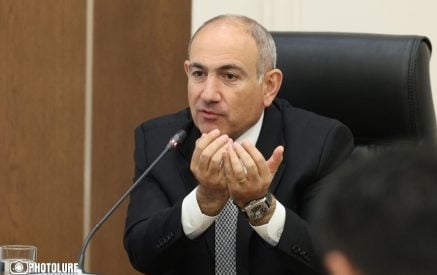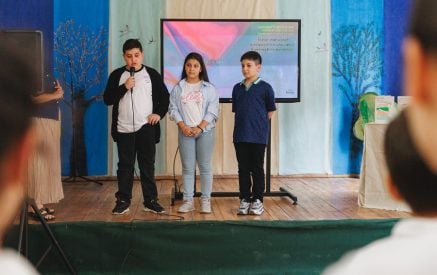The Armenian Weekly. As Armenia enters the new year, it faces a host of national security challenges in the aftermath of the recent Artsakh War that reveal limited prospects for peace under the ceasefire agreement.
The November 9 trilateral end-of-war agreement, signed by the presidents of Russia and Azerbaijan and the prime minister of Armenia, ended the 44-day-long Artsakh War. Under the agreement, most of the seven outlying territories of Artsakh as well as about a third of the land of Artsakh proper were handed over from Armenia to Azerbaijan.
The process of demarcating the new borders established by the ceasefire agreement is as of yet incomplete. Regarding the border between Armenia and Azerbaijan, Soviet-era international boundaries have been revived, without consideration for the new realities on the ground. Borders cleave entire villages and even homes into two, threatening displacement for residents of border villages and separation from farmlands and water sources. The delimitation of boundaries also brings Armenian and Azerbaijani civilian settlements into close proximity unmatched since the Soviet era.
Security risks have been heightened for the residents of Armenia’s southernmost province of Syunik in particular. Under the ceasefire agreement, the regions of Zangelan and Kubatli were returned to Azerbaijan, creating a new border with Syunik. Parts of the major Goris-Kapan-Meghri highway now pass through Azerbaijani territory as well, prompting fears regarding the security of travel and transportation along the road.
Read also
The Human Rights Defender’s Office of Armenia criticized the placement of a sign stating “Welcome to Azerbaijan” along the road between the village of Vorotan and the town of Goris as a clear attempt to “intimidate and terrorize civilians.” The sign, erected on December 28, includes a map in which settlements in Syunik are represented as part of Azerbaijan. Locals have submitted concerns regarding the violation of their rights to life, property, physical security and inviolability to the Human Rights Defender’s Office.
During a cabinet session on December 24, Prime Minister Nikol Pashinyan noted that the villages of Vorotan and Shournoukh were two sites where the process of border demarcation could result in “painful outcomes” for residents, as their homes or land could end up under Azerbaijani control. The PM reiterated that no land has been conceded from within the internationally recognized borders of Armenia. Three days later during an interview with the Public Television Company of Armenia, he asserted that the government is engaged with the specification of border checkpoints, rather than the delimitation of the entire length of the border. He stated that this process was undertaken to ensure the security of Syunik once it became clear that border disputes could revive another war.
In Shournoukh, Azerbaijani officials have demanded that residents evacuate twelve homes that now lie east of the border between Armenia and Azerbaijan by the start of January. The regional administration has promised to provide them with monetary compensation in return for the loss of private property.
Over a month after the signature of the agreement, many families remain uncertain regarding the fate of their relatives who fought in the war. While the exchange of prisoners of war and other detained persons has commenced according to the provisions of the ceasefire agreement, a number of POWs and civilians remain in Azerbaijan. The daily process of identifying and returning POWs and missing persons continues through mediation of the International Committee of the Red Cross (ICRC) and Russian peacekeepers. However Armenian officials continue to resound calls that Azerbaijan artificially protracts this process while condoning inhuman treatment of captured Armenians.
The Office of the Human Rights Ombudsman of Artsakh has published six reports over the past two months regarding the treatment of Armenian prisoners. Most recently the office published an interim report on the cases of killings of civilians by the Azerbaijani armed forces. According to the report, 60 civilians were killed between September 27 and December 22, 2020. Among them 39 were killed by targeted strikes on civilian settlements, including missile strikes, shelling and bombing, while 21 were killed while in captivity through direct means including physical violence, stabbing, beheading and close-range shots. Meanwhile 40 cases of missing civilians have been recorded, some of whom remain in Azerbaijani captivity. The report excludes a number of unverified cases of killings and missing persons.
The exchange of POWs and detained civilians has taken place several times. On December 14, 44 POWs were transferred to Armenia, among whom were 30 soldiers and 14 civilians. On December 9, three civilians returned to Armenia; a fourth who had been detained alongside them died in Azerbaijani captivity. Meanwhile 1,073 bodies have been found and identified on the battlefield, yet the fate of 1,600 missing persons is still unknown.
Armenia’s Human Rights Ombudsman Arman Tatoyan has claimed that Azerbaijan refuses to cooperate with the two mediating bodies and delays the processes of exchanging POWs, providing information about detained persons and offering access to the battlefield with the goals of “creating an atmosphere of uncertainty and tension in the Armenian society” and disrupting the “mental immunity.”
The International Crisis Group, a think tank based in Belgium devoted to conflict prevention and resolution, delineated its proposals on promoting sustainable peace in a briefing titled “Improving Prospects for Peace after the Nagorno-Karabakh War.” According to the briefing, while the future governance of Artsakh remains ambiguous, its status is unlikely to be resolved in the near future through a forced settlement. Rather, actors should address immediate humanitarian concerns and facilitate economic integration in order to create a new order in the South Caucasus conducive to peaceful coexistence.
The briefing also states that Russia should take the lead in upholding security along newly demarcated borders by ensuring that local civilians have access to water, health care, emergency response and religious and cultural sites. While the future of the OSCE Minsk Group process remains unclear, the OSCE can dispatch diplomats and missions to guarantee delivery of humanitarian aid, hear human rights concerns and possibly work with the joint peacekeeping center in Stepanakert. The ICRC, for its part, can revive past efforts to facilitate dialogue across borders on water-related issues.
The briefing suggests that the ceasefire provision calling for a new corridor connecting Azerbaijan and Nakhichevan and unblocked transit and trade in the region creates possibilities for the opening of economic relations between Armenia and its neighbors. International donors, whose increased efforts will be critical, should ensure that reconstruction projects support linkages and trade.
Since the PM’s signature of the trilateral agreement, a coalition of 17 opposition parties called the “Homeland Salvation Movement” has been organizing daily protests in Yerevan demanding his resignation. Dozens of peaceful demonstrators, including members of the Armenian Revolutionary Federation (ARF), were arrested this week outside Armenia’s National Assembly. On December 25 Pashinyan announced that he is prepared to leave the position of prime minister “only by the decision of the people” and invited consultations on holding snap parliamentary elections in 2021. The opposition movement has rejected his proposal for early elections, maintaining its position that Pashinyan must resign immediately and make way for the formation of an interim government of national unity. When asked whether it was possible to reach a compromise after a meeting with the PM, Bright Armenia party leader Edmon Marukyan responded, “The political crisis continues.”

A young woman getting detained by police during a protest in Armenia, December 25, 2020 (Photo: Armenian Revolutionary Federation/Facebook)
Lillian Avedian
Main caption: Armenia’s Human Rights Defender Arman Tatoyan visits Armenian province of Gegharkunik, December 29, 2020

























































